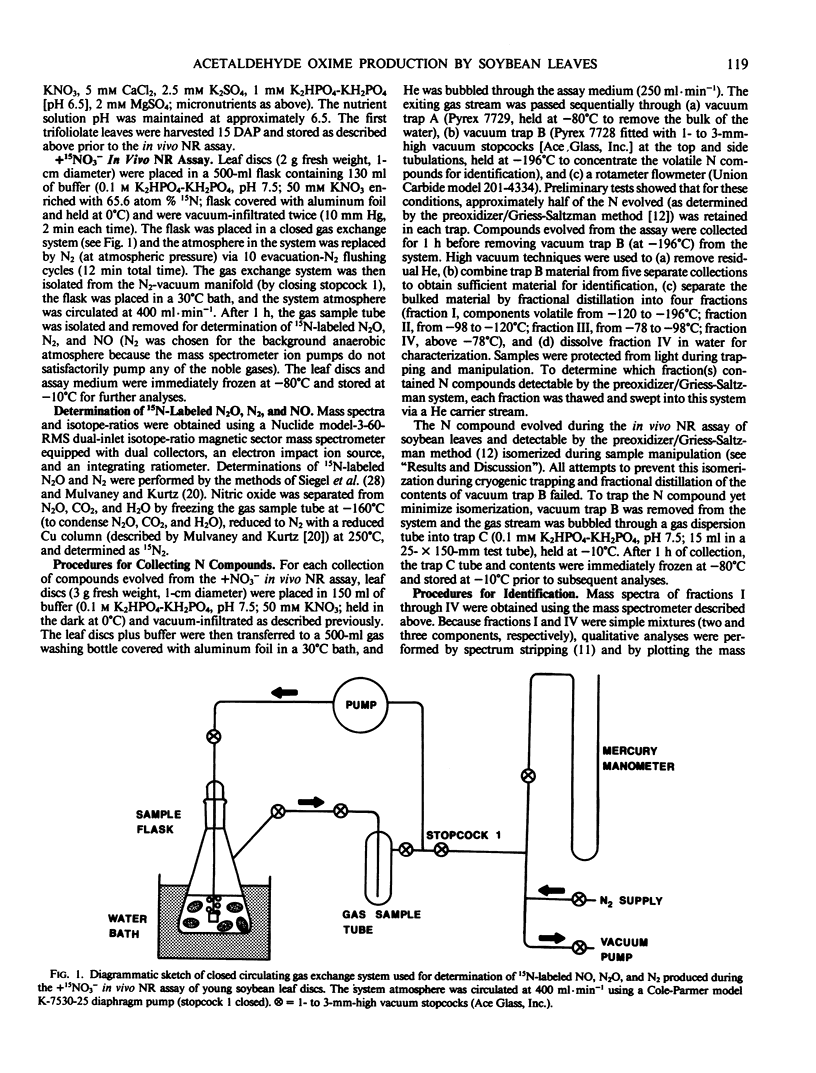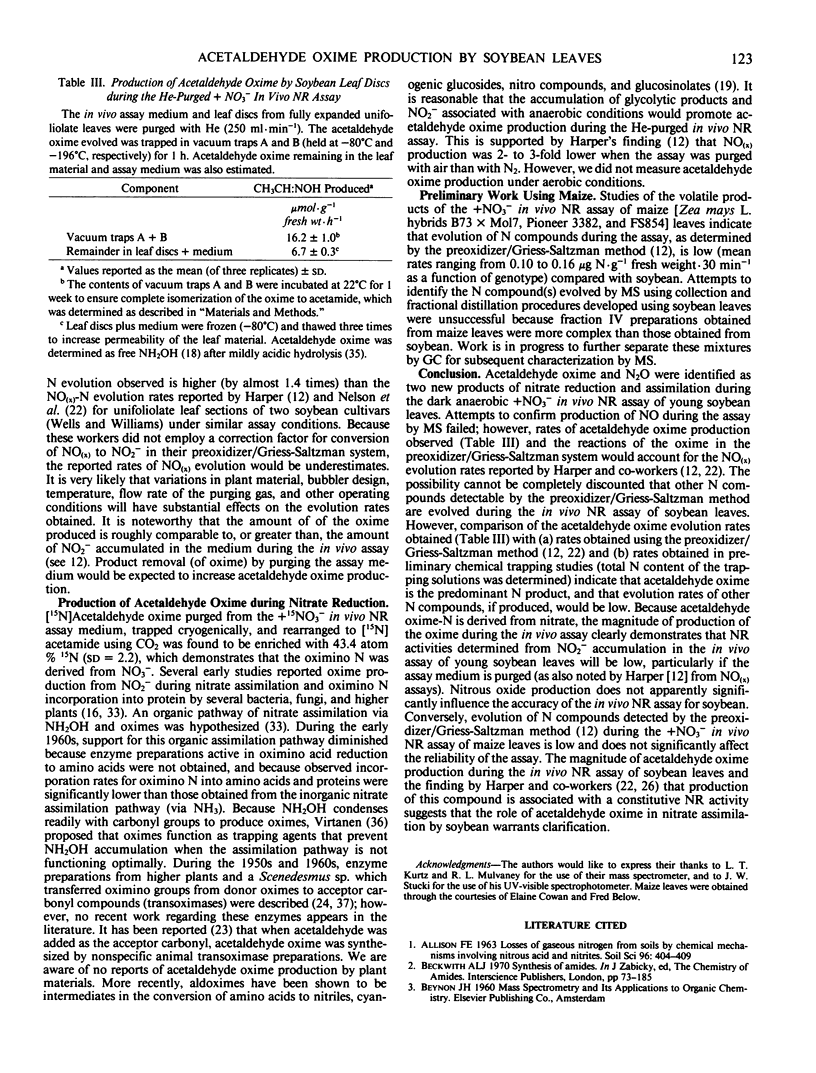Abstract
Evolution of nitrogen oxides (NO(x), primarily as nitric oxide) from soybean (Glycine max [L.] Merr.) leaves during purged in vivo nitrate reductase assays had been reported; however, these reports were based on a method that had been used for determination of NO(x) in air. This method also detects other N compounds. Preliminary work led us to doubt that the evolved N was nitric oxide. Studies were undertaken to identify the N compound evolved from the in vivo assay that had been reported as NO(x). Material for identification was obtained by cryogenic trapping and fractional distillation, and by chemical trapping procedures. Mass spectrometry, ultraviolet spectroscopy, and 15N-labeled nitrate were used to identify the compounds evolved and to determine whether these compounds were derived from nitrate. Acetaldehyde oxime was identified as the predominant N compound evolved and this compound is readily detected by the method for NO(x) determination. Substantial quantities of acetaldehyde oxime (16.2 micromoles per gram fresh weight per hour) were evolved during the in vivo assay. Small amounts of nitrous oxide (0.63 micrograms N per gram fresh weight per hour) were evolved, but this compound is not detected as NO(x). Acetaldehyde oxime and nitrous oxide were both produced as a result of nitrate (15NO3−) reduction during the assay.
Full text
PDF






Selected References
These references are in PubMed. This may not be the complete list of references from this article.
- Bleakley B. H., Tiedje J. M. Nitrous oxide production by organisms other than nitrifiers or denitrifiers. Appl Environ Microbiol. 1982 Dec;44(6):1342–1348. doi: 10.1128/aem.44.6.1342-1348.1982. [DOI] [PMC free article] [PubMed] [Google Scholar]
- Harper J. E. Evolution of Nitrogen Oxide(s) during In Vivo Nitrate Reductase Assay of Soybean Leaves. Plant Physiol. 1981 Dec;68(6):1488–1493. doi: 10.1104/pp.68.6.1488. [DOI] [PMC free article] [PubMed] [Google Scholar]
- Hucklesby D. P., Hageman R. H. Hydroxylamine reductase enzymes from maize scutellum and their relationship to nitrite reductase. Plant Physiol. 1976 May;57(5):693–698. doi: 10.1104/pp.57.5.693. [DOI] [PMC free article] [PubMed] [Google Scholar]
- Nelson R. S., Ryan S. A., Harper J. E. Soybean mutants lacking constitutive nitrate reductase activity : I. Selection and initial plant characterization. Plant Physiol. 1983 Jun;72(2):503–509. doi: 10.1104/pp.72.2.503. [DOI] [PMC free article] [PubMed] [Google Scholar]
- Omura H., Tsutsumi M. Distribution of transoximase. Enzymologia. 1968 Mar;34(3):187–197. [PubMed] [Google Scholar]
- Omura H., Tsutsumi M., Hatano S. Spectrophotometric estimation of transoximase. Enzymologia. 1967 Oct 31;33(3):139–152. [PubMed] [Google Scholar]
- Payne W. J. Reduction of nitrogenous oxides by microorganisms. Bacteriol Rev. 1973 Dec;37(4):409–452. doi: 10.1128/br.37.4.409-452.1973. [DOI] [PMC free article] [PubMed] [Google Scholar]
- Ryan S. A., Nelson R. S., Harper J. E. Soybean Mutants Lacking Constitutive Nitrate Reductase Activity : II. Nitrogen Assimilation, Chlorate Resistance, and Inheritance. Plant Physiol. 1983 Jun;72(2):510–514. doi: 10.1104/pp.72.2.510. [DOI] [PMC free article] [PubMed] [Google Scholar]
- Verstraete W., Alexander M. Heterotrophic nitrifiction by Arthrobacter sp. J Bacteriol. 1972 Jun;110(3):955–961. doi: 10.1128/jb.110.3.955-961.1972. [DOI] [PMC free article] [PubMed] [Google Scholar]
- YAMAFUJI K., SHIMAMURA M., TAKAHASHI H. Oximase and transoximase in green algae. Enzymologia. 1954 Sep 15;17(2):110–112. [PubMed] [Google Scholar]


